Animals are friends, not food! Well, let us say they’re not clothes either.
The world isn’t a dark place anymore. With the growing concern about the impact of the textile industry on Earth and its furry residents, many people are ditching their fur and wool clothes and looking for vegan alternatives.
It’s not only because the number of vegans is rising, but also non-vegans are starting to reduce their consumption of animal skin. Even if they don’t agree with all vegan concepts, they believe that wearing vegan fabrics helps save the environment they are sharing.
The problem is that if you’re not going to wear silk scarves and cashmere cardigans, what are your other vegan options? We intend to dig into every detail about vegan fabrics, so continue reading to know what to avoid and what to look for when searching for ethical materials.
What are Vegan Fabrics?
Veganism isn’t only about avoiding leather and fur as obvious animal products. Vegan fabrics are those that are entirely free from any form of animal or insect-derived ingredients. That means that no living creatures have been involved in the construction or any step of the manufacturing process.
The whole idea is to spare animals’ lives and save them the unnecessary exploitation they suffer from so that we can wear luxurious and extra soft material or decorate our houses with rich fabrics.
Committing to vegan fabrics doesn’t only mean abandoning popular non-vegan materials like fur and wool. However, you’ll have to watch out for the unexpected details like fabrics attached together with animal-derived glue or treated with beeswax. The material may be cruelty-free, but some details can exclude it from the “vegan fabrics” category.
Types of Vegan Fabrics
Vegan fabrics can be separated into two main categories:
Synthetic Fabrics
These are human-made fabrics that involve some synthetic derivatives and a bunch of chemical reactions. The polymers are turned into yarn and used to manufacture clothes, shoes, furniture, etc.
The end product of this process is usually a material totally shaped to your liking, whether you want a thin and breathable fabric or a warm and insulating one.
As far as nature is concerned, synthetic fabrics aren’t the healthiest considering the number of chemicals used. Nevertheless, they’re the most popular alternative for non-vegan materials.
Natural Fabrics
These are plant-based textiles. You’ll be surprised by the number and different types of plants used to create different fabrics. Cotton is a famous example, but there are many others that we’re going to discuss later on in the article.
Although some of them are treated with chemicals to a certain extent, natural materials are generally more sustainable and healthier to the environment.
Unethical Fabrics to Avoid
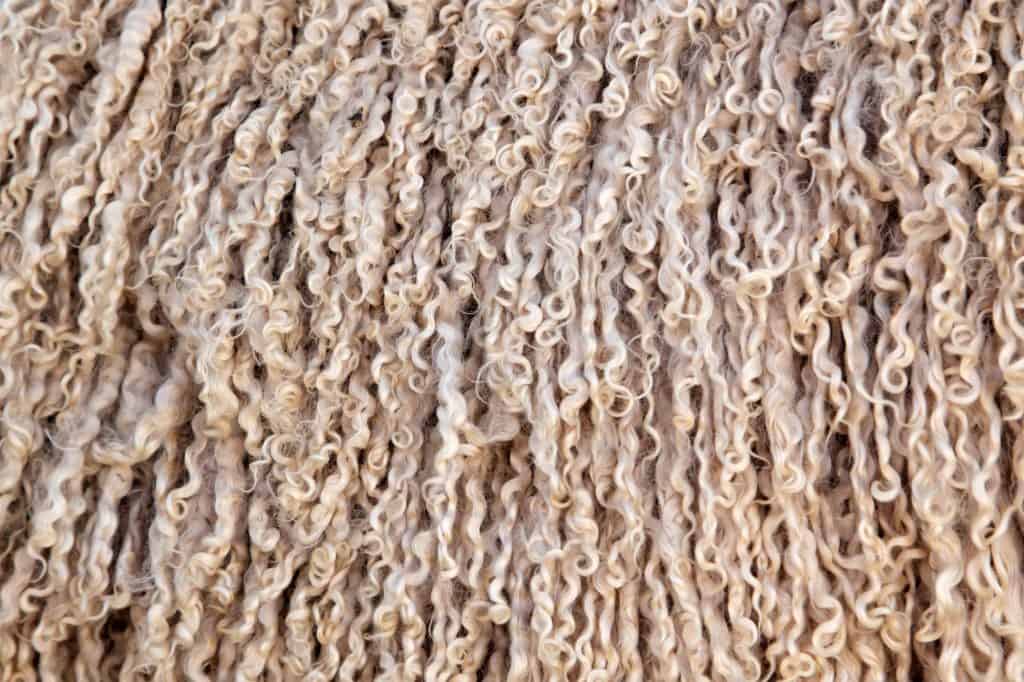
Before we get to vegan fabrics, it’s equally important to know which materials to avoid. Vegan awareness campaigns and documentary films enlighten people that the production of popular fabrics like fur, leather, wool, cashmere, reptile skins, and mohair include animal exploitation.
Some people used to think that these fabrics are safe, thinking they’re taken from animals after they die of old age. Others thought that wool is okay based on the fact that sheep do need shearing after all.
However, the truth is, animals are raised and treated inhumanely in crowded and filthy farms. Farmers use the cheapest methods available to get these animals’ skins and fur. Animals are electrocuted, poisoned, and suffocated. Then, they’re skinned and left to bleed to death. Horrible, isn’t it?
But are they the only fabrics that expose animals to torture? Not even close!
Down and feathers, which are used in insulating jackets, pillows, beddings, accessories, and some house decorations, are produced in brutal ways. Feathers are plucked from geese and ducks while they’re still alive, exposing them to gruesome pain. Their skins are ripped open in the process, and after the workers are done with them, they sell them as meat.
The same goes for ostriches’ skin, which is used in fancy handbags and accessories. Workers stun them, cut their throats, then tear their feathers and skin them.
Silk is another fabric that many vegans thought was safe because they had no idea where it comes from. The thing is, silk comes from cocoons, which are the transitional phase between young worms and mature moths. To obtain the fabric, worms are boiled to death or subjected to poisonous gas in their cocoons.
Alternative Vegan Fabrics
Fortunately, all these forbidden fabrics have vegan alternatives made into every type of clothing, so you’d never miss out on anything.
1. Faux Fur
The most well-known vegan fabric is faux fur, also known as pile fabric. It’s been around since the 1950s and has been a vastly-used alternative for real fur.
Made from polyester or a mixture of polyester and acrylic, the textile isn’t as soft as fur but definitely guilt-free. It’s artificially engineered to have the feel and warmth of its animal alternative, though it’s not as insulating.
The material comes in an array of shapes, and depending on quality, its price varies. Most of them are cheaper than real fur and can be machine washed. However, premium-grade faux fur can be more expensive and is as lush and smooth as the real deal.
> Read more: Ultimate guide to faux fur.
2. PVC
PVC (plastic polyvinyl chloride) textile, also known as vinyl fabric, is one of the most popular vegan alternatives for leather. The material is made from woven polyester threads and covered with a shiny plastic coating.
Although it doesn’t cost half as much as real leather, it shares many of its qualities. For instance, it’s equally insulating and waterproof. Despite being not as durable as the actual fabric, it’ll last you a long time before it demands a replacement, thanks to its strongly bound chemical structures and resistance to oxidative reactions.
Appearance-wise, the textile isn’t as fancy and glamourous as leather, yet it’s an elegant option. It is also produced in many colors to match different fashion trends. Given that soaking in water can damage it, PVC clothes should only be dry cleaned and never ironed as they can melt under such high temperatures.
3. PU Leather
Synthetic polyurethane leather is another alternative for leather and is considered a finer imitation of the genuine fabric.
Compared to PVC, PU leather is slightly more expensive, yet it’s more durable and looks superior in quality. It’s also more similar to animal leather in terms of the feel and looks. Besides being completely cruelty-free, it’s greener than PVC as it doesn’t leach harmful dioxins when burnt, though it’s not biodegradable as real leather.
The fabric is made of an animal-friendly thermoplastic polymer and is free from any plasticizers. Regarding performance, it’s light, soft, waterproof, highly resistant to peeling and cracking, and can be dry cleaned. Lower quality models may not last much, but higher-grade ones can take residency in your closet for two years or more.
Overall, PU leather is an excellent vegan fabric. However, watch out for pieces made from Bicast leather. These are made of real animal skins, and only the coating is PU leather, so they can’t be considered vegan.
4. Pineapple Leather
We only relate pineapple with the summer months and the tropical islands of Hawaii, but did you know that you can wear the leaves of these fruits?
Pinatex is a fabric made from the cellulose fibers extracted from pineapple leaves, which are a byproduct of the farming industry. This particular material is a dream. Apart from being vegan as no animals are remotely involved in its manufacture, it’s one of the greenest options out there.
Being biodegradable and renewable, it possesses a high degree of sustainability. Moreover, it doesn’t consume much energy or water, and thus it’s a safe option for animals and the planet as well. The only difference between pinatex and animal leather is that it’s not waterproof. However, it’s water-resistant and can definitely take a beating.
The fabric is used to make classy wallets and purses, thanks to its unique wrinkled shape. Although it hasn’t been around for a long time, it’s adopted by many famous fashion houses like Zara and Stella McCartney.
5. Cotton

Cotton is the universal vegan fabric. Commonly used as an animal-friendly alternative to wool, it’s mass-produced and has many types; each has a different durability level and price.
The fabric is plant-based and is grown without the use of harmful chemicals. Generally, it has a good effect on the ecosystem and is 100% vegan.
Compared to wool, it’s less elastic and requires frequent ironing. Nevertheless, it has a pleasantly soft feel and high absorbency qualities. It’s also breathable, dries fast, and can stand many trips to the washing machine before it deteriorates. People with sensitive skin prefer cotton over any other fabric as it’s ultra-soft on the skin.
Due to its infinite advantages, it’s used in sportswear, socks, jeans, bedsheets, curtains, towels, and pretty much anything that comes to mind.
6. Cupro
Although commonly known as the “sustainable vegan silk,” cupro is a relative of cotton. The fabric is made of the regenerated cellulose taken from the waste left behind after harvesting cotton. It hasn’t been 40 years since it was invented, so it’s quite new. However, it’s relatively cheap compared to silk.
Cupro is, hands down, the friendliest fabric to animals, the environment, and your skin. It’s recyclable, biodegradable and its manufacture has nothing to do with any kind of animal.
If you buy a cupro dress, rest assured that it’ll last you a lifetime. Besides its incredible durability, the fabric has the same feel of silk and is breathable as well as stretch-resistant. It has the ability to regulate your body’s temperature so you’d never feel too hot or too cold, and it dries in a flash. On top of that, it’s kind to sensitive skin.
7. Linen
Cheers to the most durable fabric of all! Often compared to cotton, linen may have the same absorbency of the said fabric, yet it’s way thicker and dries faster.
While a cotton top will last you two years at best, a linen dress can stay with you while looking good as new until you’re sick of it. That’s how durable it is, and incredibly enough, it even gets stronger and softer to the skin after every wash.
The fabric is a loyal friend to animals and nature. Made from fibers of flax plants, it’s recyclable and biodegradable. It requires little to no pesticides, so it has a lower environmental impact than most crops.
With that being said, linen is the best vegan alternative to wool. It’s breathable, non-allergenic, naturally insect-repellent, and looks classy and chic overall.
Price-wise, it’s more expensive than cotton, given that the manufacturing process is time-consuming and laborious. However, it’s still cheaper than natural wool.
8. SeaCell
No laborious farming, no pesticides or fertilizers, and definitely no excessive use of water and land. That’s what the eco-friendly and vegan fabrics made from seaweed promises. Oh, and it’s biodegradable too.
To make the fabric, this ocean plant is collected, crushed, and ground then mixed with eucalyptus cellulose fiber. The produced textile is called SeaCell and is known as “the ocean leather.”
The fabric is light and breathable due to its porous structure. Owing to seaweed’s nature, SeaCell is smooth and doesn’t cause irritating itchiness. It has antimicrobial properties, which explains its common usage is socks and sportswear, as it prevents the production of any stinking smells.
9. Rayon and Lyocell
These are famous alternatives to natural silk. Rayon is a plant-based fabric that’s made from purified cellulose fibers taken from wood pulp. Although its origin is natural, it requires many chemicals to be made into yarn which makes it a semisynthetic fabric that’s not so environment-friendly. Yet, it’s totally cruelty-free.
This naturally wrinkle-free material is light, thin, and doesn’t stick irritatingly to the body. Being comfortable to wear on hot days, it’s used to make several athletes garments and summer dresses. Furthermore, it’s stretchy and accepts many dyes, so it’s always a chic option.
Compared to silk, it doesn’t break the bank, though it’s pricier than cotton and linen. What’s more, it’s fairly weak and requires gentle dry-cleaning, or else it’ll be subjected to shrinking or unnatural stretching.
Lastly, lyocell is a form of rayon that has the same exact fabric properties and is equally animal-friendly. However, its manufacturing doesn’t require harmful chemicals, so it’s more eco-friendly.
10. Modal
Modal shares a lot with rayon. It’s an ultra-soft silk alternative that’s made from the wood pulp of beech trees. Besides being vegan and biodegradable, the sustainable fabric is light, resistant to pilling, and has a smooth and shiny finish. Moreover, it doesn’t cause sensitive skin to have any violent reactions.
Being breathable and 50% more absorbent than cotton, modal is used to make pillow coverings, bedsheets, sportswear, and soft clothes like underwear and pajamas. Similar to rayon, it’s flexible and resists wrinkling. Nevertheless, modal can be machine washed, and it’ll last you more than a couple of years.
11. Bamboo
Bamboo textile is one of the greenest plant-based materials you can wear and use with a clear conscience toward our cute animal friends. The manufacturing process goes by crushing the plants and breaking them down by enzymes. Then they are turned into fibers and spun into yarn.
The fabric is widely popular for its cashmere feel and lustrous look. It can absorb enormous amounts of water and wicks it fast, making it the best material for towels, bathrobes, beddings, and sportswear.
It’s an animal-friendly alternative to unethical wool which shares its thermoregulating abilities and antimicrobial properties. A bamboo shirt will keep you cool in summer and warm in winter. Besides, it absorbs sweat like magic and doesn’t cause allergic reactions.
12. Hemp
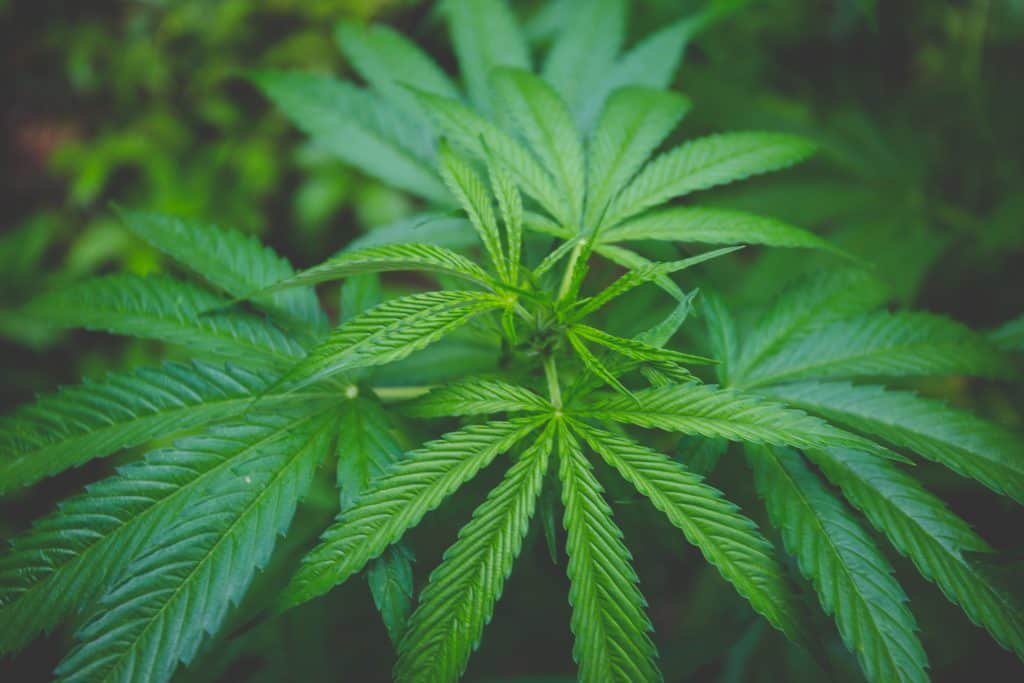
This eco-powerhouse of a plant is a gamechanger in the world of sustainable and vegan fabrics. The plant is organically farmed without pesticides or fertilizers and with a tiny amount of water. Moreover, the fact that the textile’s manufacturing process is completely free of harmful chemicals and toxic wastes makes you wear it with a grin on your face.
Not only that, but hemp is also beneficial to the soil. It purifies it by removing toxic chemicals and heavy metals. Besides, its shed leaves act as natural fertilizers for other plants, which means if there’s any plant that our Earth is going to thank you for growing, it’s hemp.
If the crazy consumption of lands is a point held against cotton and flex, it doesn’t apply for hemp. That’s because it’s a high-yield crop that produces double the amount of cotton yield grown in the same area.
As for the fabric, its fibers are held firm like a spider’s web. It withstands frequent washing without stretching out of shape and is far more absorbent and breathable than cotton. Furthermore, it’s dyed easily, and its colors never fade over time. However, it wrinkles easily, so it tends to be not so travel-friendly.
13. Soybean Cashmere
Want to wear cashmere that doesn’t hold the screams of the poor pashmina goats? Let’s make it from organic food.
Soybean cashmere is made from the byproducts of the tofu manufacturing process. In addition to being biodegradable, its construction is free from environmentally-toxic petrochemicals. Hence, it’s safe for both standard and environmental vegans.
The fabric maintains the flowy and cozy cashmere feel with a bit of stretch to hug your body. Despite lacking the strength of cotton and hemp, it’s warm, comfortable, and has a lustrous sheen. It absorbs moisture effectively, allows perspiration to evaporate, and is highly resistant to smells. It’s also an ideal choice for you if you’re sensitive to sun rays, given that it’s UV resistant.
PETA Tags and Vegan Fashion Houses
After reading this article, we hope you understand that shopping while being a vegan isn’t the end of the world. Yes, most fabrics are unethical and animal-derived substances can be hidden in the most unexpected places like the glue used in a pair of vegan shoes or the ink print on your ethical t-shirt.
However, all you have to do is pay attention to what you’re grabbing from the shelf. Check the tags and make sure the item doesn’t contribute to the horrible lives of our beloved animal friends.
Luckily, PETA (People of Ethical Treatment of Animals) is doing a massive role in verifying the pieces of many brands. In general, if you notice the “PETA-approved vegan” logo on the tag, you don’t have to think twice before going to the cashier.
Moreover, many major fashion brands have stopped using animal products and turned vegan-friendly. You don’t have to check the tags at these stores because they’ve gained PETA’s approval on their products.
Some of these brands are Matt and Nat, Angela & Roi, Native Shoes, Tokyo Bags, and even the leather watch company Votch.
Final Thoughts
Now that you’re enlightened on the vegan fabrics on the market, you can choose wisely. If the label mentions any non-vegan substance, leave it immediately and advise your friends and family to do the same. If you’re contemplating two vegan items, always choose the more sustainable one. By that, you’ll be saving every breathing being on the planet, not just animals.
And finally, stay vegan, stay classy and true!



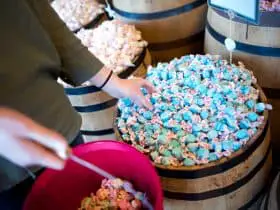
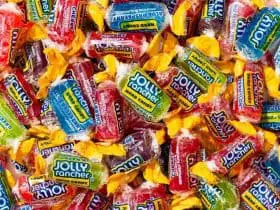
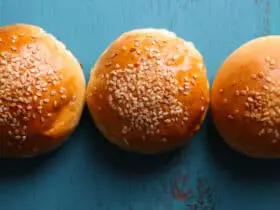

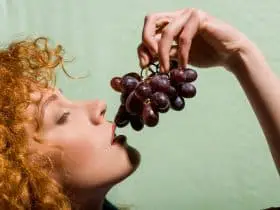
![[Company Profile] Will's Vegan Shoes: The Best Products They Offer 35 Will's Vegan Shoes](https://getvegan.com/wp-content/uploads/2021/10/wills-vegan-shoes-280x210.jpg)
![Everything You Need to Know About Vegan Shoes [Ultimate Guide] 38 vegan shoes guide](https://getvegan.com/wp-content/uploads/2021/07/vegan-shoes-280x210.jpg)
![[Company Profile] 15:21: The Best Products They Offer 41 15:21 Company Profile](https://getvegan.com/wp-content/uploads/2021/07/1521-store-1-280x210.jpg)
![[Company Profile] Matt & Nat: The Best Products They Offer 44 Matt and Nat](https://getvegan.com/wp-content/uploads/2021/04/matt-nat-280x210.jpeg)
Leave a Reply